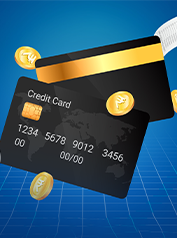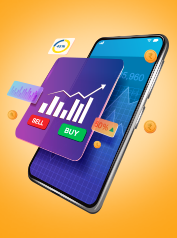Credit card swipe charges are an essential aspect of card usage that both merchants and customers should understand. These charges are fees levied during a transaction where a credit card is swiped, tapped, or inserted to process a payment.
Credit card swipe charges, also known as merchant discount rates (MDR), are the fees charged to merchants by payment processing companies or banks for enabling credit card transactions. These charges typically cover transaction processing, network fees, and other associated costs.
Swipe charges vary depending on factors such as the type of credit card, the payment gateway used, and the nature of the business. For instance, international cards usually attract higher fees than domestic cards.
Swipe charges are applied as a percentage of the transaction value. The percentage varies based on the type of card used (credit or debit) and the agreement between the merchant and the payment service provider. Typically, these charges range from 1% to 3% of the transaction amount.
For example:
If you swipe your card for ₹10,000 at a store, and the swipe charge is 2%, the merchant pays ₹200 as a fee.
The bank or payment service provider deducts this amount before transferring the remaining payment to the merchant.
Swipe charges may also differ based on payment methods. Transactions made through premium credit cards or international credit cards tend to have higher swipe fees than standard cards. Additionally, some service providers add a flat fee for certain transactions, especially for smaller payments.
The merchant usually pays the credit card swiping charges in India. However, businesses often account for these charges when setting the price of goods or services. In some cases, merchants may pass the swipe charges onto customers directly, especially for high-value transactions or when using premium credit cards.
For instance:
If you purchase an item worth ₹1,000 and the merchant adds a 2% swipe charge, your final bill becomes ₹1,020.
This practice is common in small businesses or sectors with thin profit margins.
Understanding credit card swipe charges can help you make informed financial decisions. Here are a few benefits:
Cost Awareness: Knowing these charges enables you to evaluate whether paying via card is worth the convenience.
Transaction Transparency: Awareness of swipe charges ensures you can question unfair additional fees if they are passed on to you.
Budget Management: By factoring in potential charges, you can plan your expenses better.
Avoidance of Unnecessary Fees: Knowledge of these charges helps you choose cards with lower associated fees for specific transactions.
wipe charges can indirectly affect customers in several ways:
Higher Prices: Merchants may inflate prices to offset the cost of swipe charges.
Surcharges on Card Payments: Some businesses may pass the swipe fee directly to customers, particularly for credit card transactions.
Preference for Cash Payments: In cases where swipe charges are high, merchants may offer discounts for cash payments to avoid these fees.
For customers, these charges highlight the importance of selecting the right payment method for each purchase. Being aware of swipe charges helps you avoid unnecessary expenses.
Credit card swipe charges are an integral part of digital transactions. While they enable seamless payments, understanding these charges allows you to navigate them smartly, ensuring better financial planning. Always review the terms associated with your credit card to optimise its use and reduce unnecessary costs.
Credit card swipe fees typically range from 1% to 3% of the transaction value. However, fees may vary depending on the card type, the payment processor, and the merchant's agreement with their service provider.
There is no official limit to the number of times you can swipe your credit card in a day. However, the total spending amount is limited by your credit limit, and excessive swiping might trigger security checks from your bank.
Here are a few tips to avoid or minimise credit card swiping charges in India:
Use cash or UPI payments for small transactions.
Choose merchants who absorb swipe charges without passing them onto customers.
Opt for cards with lower transaction fees for frequent usage.
Negotiate with merchants when making large purchases to waive swipe fees.
The 2.5% charge on credit cards refers to a common swipe fee percentage applied during transactions. It is typically seen in cases where merchants or service providers pass the swipe fee directly to customers for card payments.












